Stye (Sty) - Symptoms, Causes and Treatment
11-09-2024
Styes, also known as hordeolums, are a common and often painful condition that affects the eyelids. They can occur in anyone, regardless of age, and while they are generally harmless, they can cause significant discomfort. This article will cover everything you need to know about styes, from what they are to how they can be treated and prevented.
What Is A Stye?
A stye is a red, painful bump that forms either on the outer or inner surface of the eyelid. Styes develop when an oil gland near the base of the eyelash becomes infected, typically by Staphylococcus bacteria. There are two types of styes:- This type appears on the outer edge of the eyelid and is often more visible.
- These form inside the eyelid and can be more painful due to pressure from the bump.
What Are The Causes of Styes?
Styes are caused by a bacterial infection, typically by the Staphylococcus bacteria, which is commonly found on the skin. The infection occurs when bacteria enter the oil glands or hair follicles in the eyelid. Several factors can contribute to the development of a stye, including:- Failing to wash your face regularly or remove makeup before bed can increase the risk of styes. Bacteria can accumulate around the eyelid and cause infection.
- The meibomian glands, located along the edge of the eyelids, can become blocked. When these glands clog, bacteria can proliferate, leading to infection.
- Frequently rubbing or touching the eyes without washing your hands introduces bacteria, increasing the chances of infection.
- Using expired makeup or sharing cosmetics with others can introduce bacteria to the eyelids, leading to styes.
What Are The Risk Factors For Styes?
While anyone can develop a stye, certain individuals are more prone to them. Several risk factors can increase the likelihood of developing styes:- This is an inflammation of the eyelid margins, often caused by bacterial overgrowth or issues with oil glands. People with blepharitis are more likely to develop styes.
- Individuals with dry eyes often experience irritation and are more likely to rub their eyes, increasing the chances of infection.
- A skin condition that causes redness and swelling, rosacea can also affect the eyelids, making styes more common in people with this condition.
- High blood sugar levels can impair the immune system, making it easier for infections like styes to develop.
- People with compromised immune systems due to illness, medication, or other conditions are more susceptible to infections, including styes.
What are the Symptoms of Styes?
Styes are easy to recognize due to their characteristic appearance and associated symptoms. The most common signs of a stye include:- This bump often looks similar to a pimple or boil. It may start small and grow larger over time, becoming more painful.
- The area around the stye may feel sore, particularly when blinking or touching the eyelid.
- As the stye develops, the affected eye may produce more tears than usual.
- Bright light can cause discomfort in the affected eye, making it sensitive to everyday light exposure.
- Some styes may cause crusting along the edge of the eyelid, particularly upon waking.
How Are Styes Diagnosed?
Diagnosing a stye is usually straightforward and can be done by a healthcare professional or an optometrist during an examination. The doctor will examine the eyelid for the characteristic bump, redness, and swelling associated with styes. In most cases, no special tests are required to diagnose a stye. However, if the stye persists or recurs frequently, additional tests may be conducted to rule out other underlying conditions, such as chronic blepharitis or meibomian gland dysfunction.How Is A Stye Treated?
In most cases, styes can resolve on their own within a week or two. However, certain treatments can speed up the healing process and relieve discomfort. Common treatment methods include:- Applying a warm compress to the affected eyelid several times a day is one of the most effective treatments. The heat helps the stye come to a head and drain more quickly.
- If the stye is causing significant pain, over-the-counter medications like ibuprofen or acetaminophen can help reduce discomfort.
- If the stye becomes infected or does not resolve on its own, an eye doctor may prescribe antibiotic ointments or eye drops to clear the infection.
- In rare cases where the stye does not improve with conservative treatments, a minor surgical procedure may be performed to drain the stye and relieve pressure.
Is There A Cure For Styes?
While there is no specific cure for styes, they typically heal on their own or with minimal intervention. Treatments like warm compresses and antibiotic ointments can help relieve symptoms and speed up recovery. Recurring styes may require further medical investigation to address underlying issues such as chronic blepharitis or other eyelid conditions.How Can A Stye Be Prevented?
Preventing styes primarily involves maintaining good eyelid hygiene and taking steps to reduce the risk of infection. Here are some practical tips for preventing styes:- Regularly wash your face and eyelids with gentle soap or eyelid scrubs to remove bacteria and oil buildup.
- Refrain from rubbing your eyes, especially with unwashed hands, to prevent transferring bacteria to the eyelids.
- Ensure that all makeup is thoroughly removed before going to sleep to prevent bacteria buildup around the eyes.
- Discard any expired makeup products, especially eye makeup, and avoid sharing them with others.
- If you have blepharitis, dry eye, or another condition that affects the eyes, work with your optometrist to manage these issues and reduce the risk of styes.
Live in Edmonton and think you may have a stye? Schedule an eye exam with our optometrists in Edmonton today!
Schedule An AppointmentFYEyes Blog Posts

Blepharitis - Symptoms, Causes and Treatment
Blepharitis is a common and chronic inflammation of the eyelids that can affect people of all ages.

Pinguecula - Symptoms, Causes and Treatment
Pinguecula is a common, non-cancerous growth on the conjunctiva, the thin, clear tissue that covers the white part of the eye.

Pterygium - Symptoms, Causes and Treatment
Pterygium is a common eye condition that involves the growth of a fleshy tissue on the conjunctiva, the thin membrane that covers the white part of the eye.

Conjunctivitis (Pink Eye) - Symptoms, Causes and Treatment
Conjunctivitis, also known as pink eye, occurs when the thin layer of tissue covering the white part of the eye and the inner surface of the eyelids becomes inflamed.
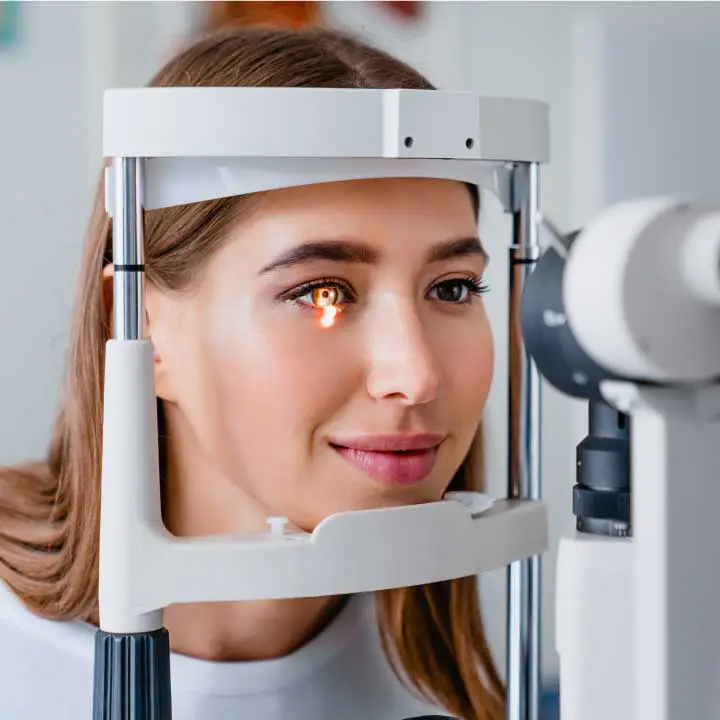
Adult Eye Exams
Our advanced eye exams consist of 25+ modern tests and digital scans to assess eye health, function, and visual acuity.
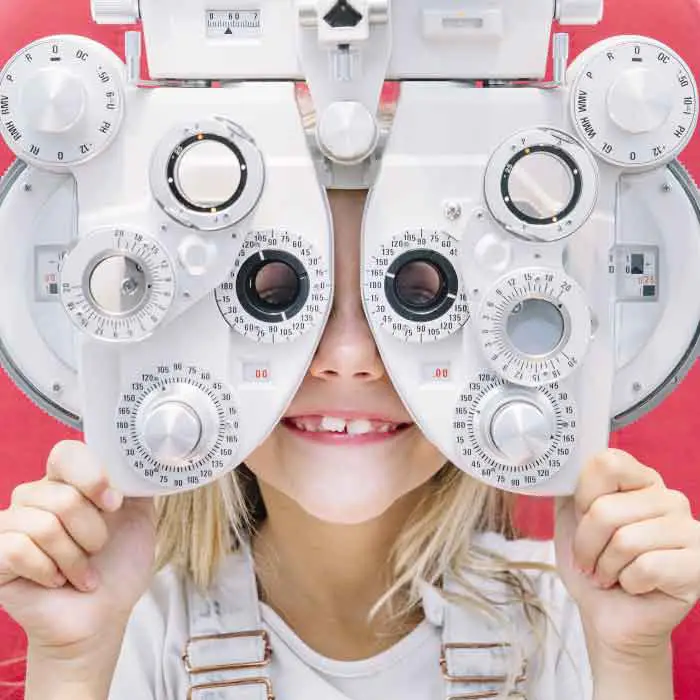
Child Eye Exams
Give your child a clear future with an annual eye exam from our experienced Edmonton optometrists.

Senior Eye Exams
Maintain your vision through your golden years with gold standard eye care from the optometrists at our Edmonton eye clinic.
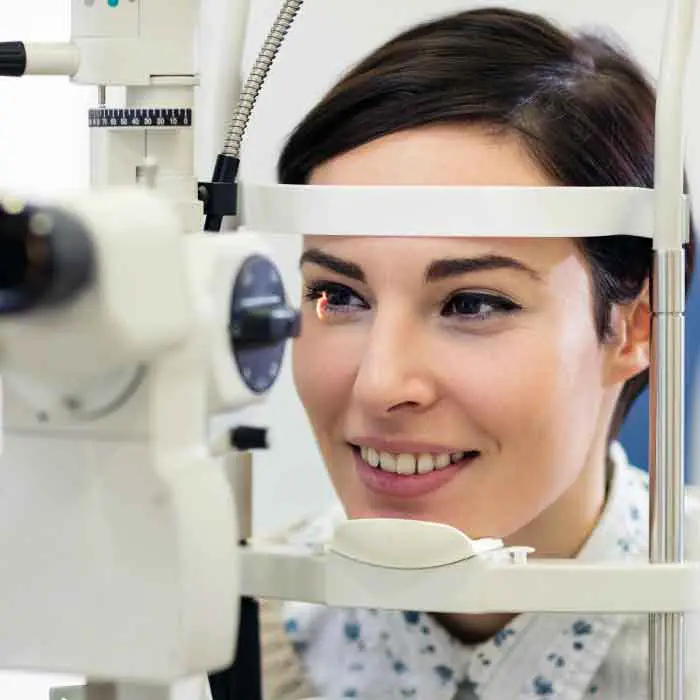
Contact Lens Eye Exams
Our eye exams for contact lens wearers include test and digital scans to assess eye health, function, visual acuity, and lens fit.
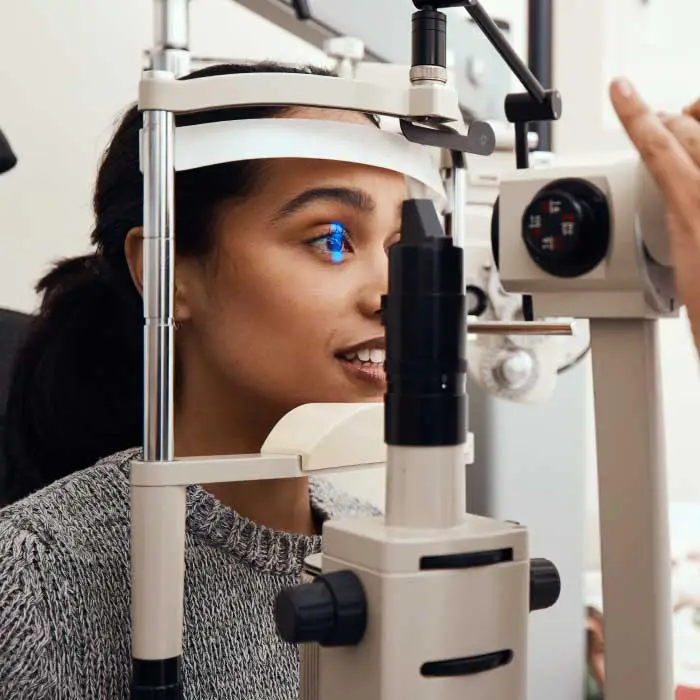
Diabetic Eye Exams
Managing diabetes requires regular eye exams to ensure that diabetes is not causing irreversible vision loss.
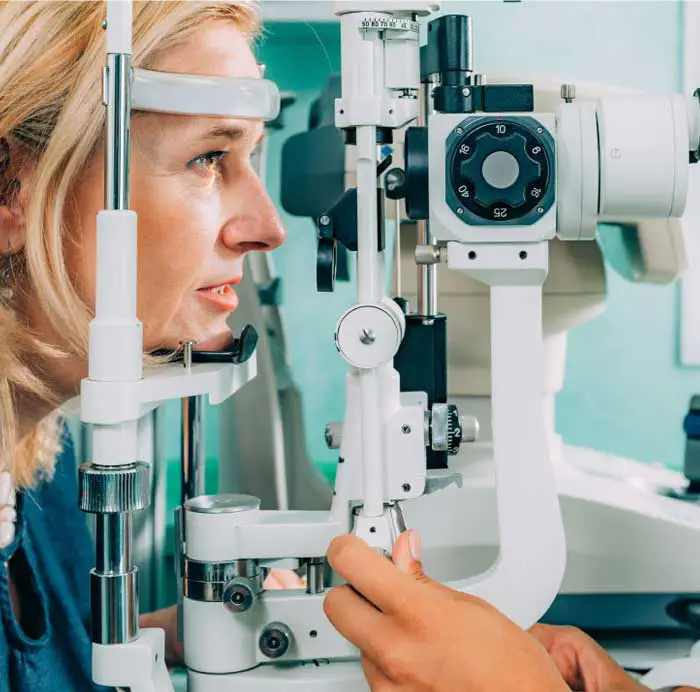
Dilated Eye Exams
Dilating the eyes enables our Edmonton optometrists to see more of the eye so that you many never see less.
Our Edmonton Eye Exams Are Comprised Of 4 Phases Of Evaluation
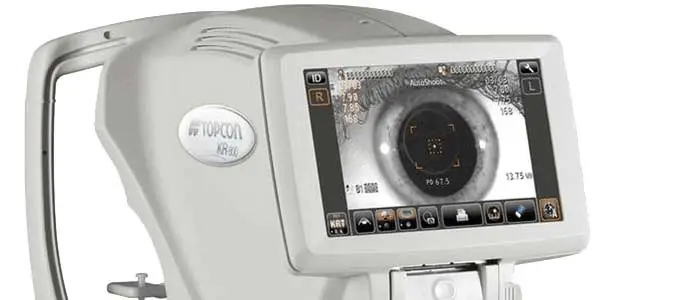
1. Eye Exam Pre-Testing
Corneal Thickness | Intraocular Pressures | Visual Field
Pre-testing is a detailed process that gathers all necessary information for the optometrist in advance of the optometrist-administered eye examination. This process involves completing a detailed patient history, as well as a series of standard tests. Pre-testing is an essential part of the comprehensive eye exam process, providing valuable information and visuals for both the optometrist and the patient.
More About Pre-Testing »
2. Advanced Diagnostic Testing
Retinal Photography, OCT, Topography
eye-deology Vision Care differentiates itself from other clinics by having the most advanced modern diagnostic specialty testing equipment. Specialty equipment, such as a wide-angle high-resolution retinal imager, Optical Coherence Tomography (OCT), Humphrey Visual Field Analyzer and corneal topographer, ensures that patients receive the best comprehensive eye care.
More About Advanced Testing »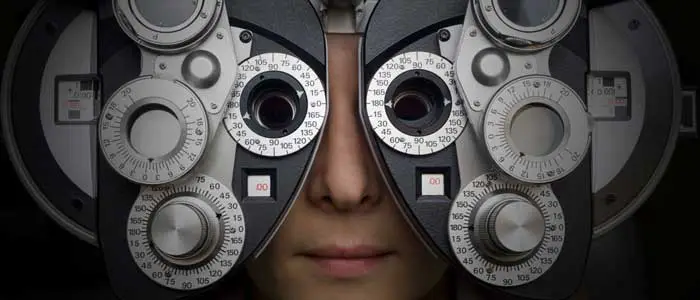
3. Optometrist Examination
Health Assessment & Disease Diagnosis
eye-deology Vision Care Edmonton optometrists perform a multitude of tests and assessments to evaluate ocular health, eye coordination, and visual acuity. In addition, they also evaluate the results of the tests and scans performed during pre-testing. As part of patient education, our optometrists also take the time to show and explain results to patients.
More About Doctor Exam »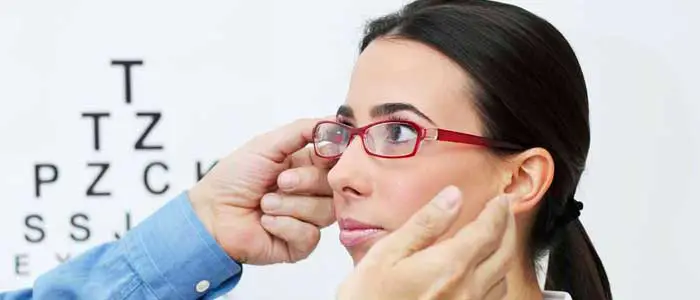
4. Eye Glass Consult
Prescription | Lens Selection | Digital Fitting
If you require corrective lenses to improve your vision, our licensed opticians will customize their fit to your unique attributes, needs, lifestyle, and budget. Our opticians are happy to provide you with information about the latest eyeglass frame and lens technologies available so you can make informed decisions and begin seeing and looking your best.
More About Eyewear Consult »